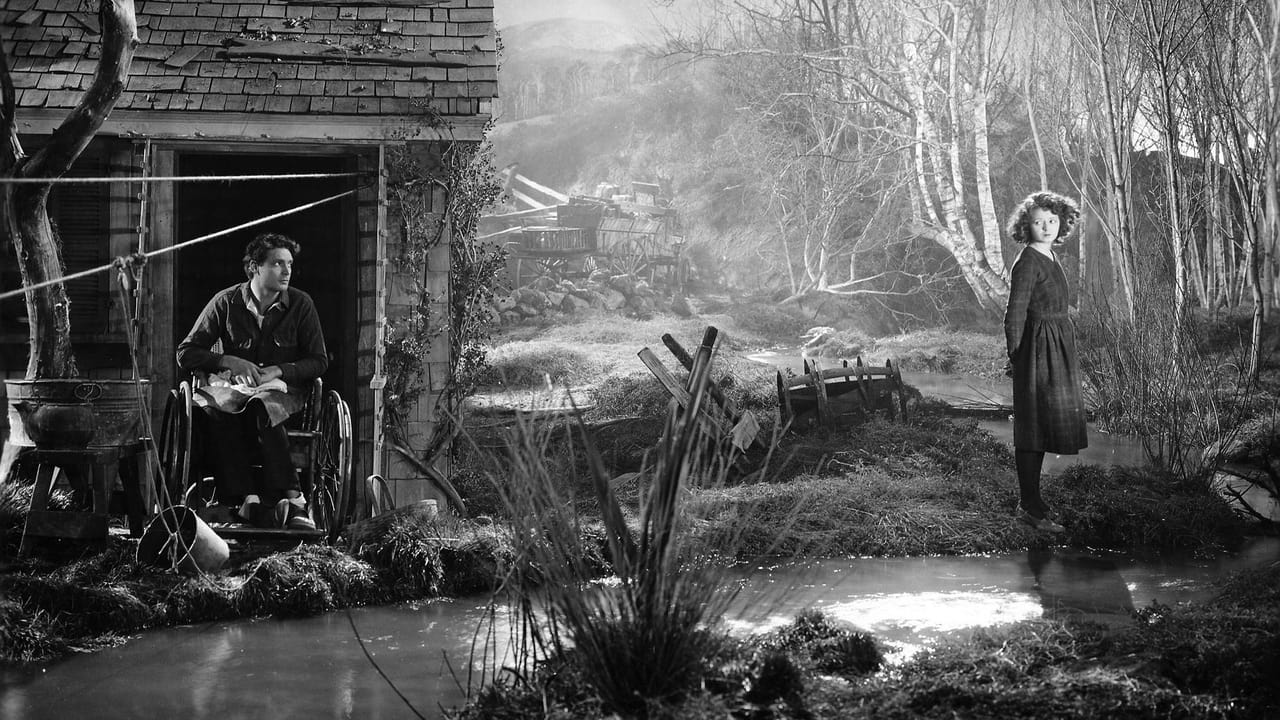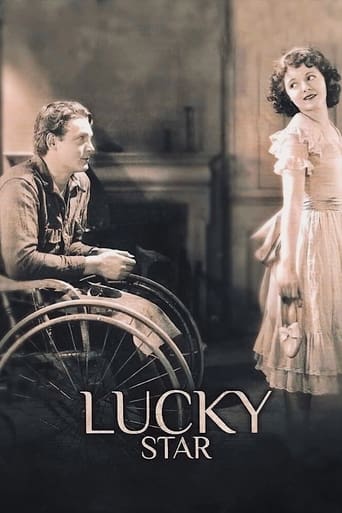Borgarkeri
A bit overrated, but still an amazing film
AshUnow
This is a small, humorous movie in some ways, but it has a huge heart. What a nice experience.
Erica Derrick
By the time the dramatic fireworks start popping off, each one feels earned.
Francene Odetta
It's simply great fun, a winsome film and an occasionally over-the-top luxury fantasy that never flags.
silentmoviefan
This is not an all-time great film, but it is surely washable. One thing that amazed me was Janet Gaynor's performance. Two years earlier, she played a rather haggard-looking wife in Sunrise (1927) and yet she plays a very believable child in this movie. Then there's Charles Farrell. In every other film I'd ever seen him in, he looked like he'd been beaten up a short time earlier, but in this one, he looks quite a bit cleaner. Speaking of Sunrise (1927), this film's atmosphere very much reminded me of it. It had that dark surrealistic type of setting. It was the same company (Fox), but different director (Frank Borzage as opposed to F.W. Murnau). It was also neat to see Paul Fix in an early role. I've seen nearly every episode of The Rifleman, where he played Micah, the Marhsall, but here he is many years earlier. He looks quite a bit different, too. Guinn "Big Boy" Williams, he did fine. His character was supposed to be a jerk and he does a good job on it, too. The reason I don't rate this film higher is because of his character, particularly when he's a boss over Charles Farrell. Like I say this film is watchable, but the ending made me go "huh?" For much of the film, Charles Farrell's character is crippled, but all of a sudden, he isn't anymore! While I do like happy endings, it's bit far-fetched. It sort of reminded me of a 1923 Warners Brothers movie in which a mute actress all of a sudden speaks (so to speak in a silent film), but the sudden change was handled better in that film than this one. While not great, I do say it is worth a look.
MartinHafer
I noticed that one reviewer referred to this as a 'perfect film'. Well, there are some serious problems with the plot towards the very end that, to me, make it less than perfect. But, aside from this, the film abounds with charm and is among the better silents I have seen--and I've seen a lot.A couple notes before I go on with the review. First, while this film originally was a part-talking picture with sound effects, the sound has been lost. However, I don't think this was a bad thing, as many such hybrid films aren't that great due to poor sound and integration of this. And, frankly, had you just assumed it was always a silent, you'd never notice the difference thanks to the excellent restoration. Second, if you get the film from Netflix, you'll find that their summary of the film's plot is very wrong.The film begins in a small town just before the US gets directly involved in WWI. Charles Farrell is a nice guy who decides to enlist. But, before he does this, he has a run-in with a tom-boyish girl (Janet Gaynor). There is no hint of love on either of their parts and Gaynor appears to be way too young anyway.In the war, Farrell is badly injured and his legs are paralyzed. He returns home after two years and is relatively upbeat considering everything--but he's also quite lonely. Gaynor begins to visit him and he assumes she's just a girl. But, slowly they both help each other--he gets the needed companionship and he cleans her up and reveals her to be a pretty young lady--a lady of almost 18. At this point, it's obvious both are starting to fall in love, but he's afraid to allow his feelings to show, as he sees himself as a cripple.Later, a horrible person (Guinn Williams) returns to town from the war--the same guy who may have contributed to Farrell's injury and the same guy who has no compunction about getting a girl to sleep with him by promising to marry them! When Williams starts to show the now prettified Gaynor attentions, Farrell cannot sit back in his wheelchair and acts. Now this action on Farrell's part was fun to watch but 100% ridiculous--no man can make a recovery THAT fast! His hopping out of his wheelchair and going on crutches for the first time--and in the snow--is ridiculous. Yes, it made for a fun finale...but one that makes no logical sense. It's a shame, actually, as up until then it WAS the perfect film. Still, the ending does not ruin the film and is well worth seeing even with its flaws.
Maliejandra Kay
Lucky Star begins in a small town and focuses on a small tomboy (Janet Gaynor). She spends her time carting various goods around town to make money for her family and brings some milk to a work site for sale. There she causes trouble between two of the men, one named Martin who believes she tried to cheat him out of his money (Guinn Williams) and the other, Tim, who defends her innocence (Charles Farrell). Suddenly, the quaint sentiment is broken by the announcement of WWI and then scatter off to enlist. A few years later, we see the town after the war. Tim has lost the ability to use his legs and is confined to a wheelchair. Martin is a man about town who uses his stint in the war for his own personal gain. The tomboy is a bit older now, but still as mischievous as before. She befriends Tim, who by this time is very lonely, and the two form a strong bond. However, Martin sees how beautiful the girl has become and goes about wooing her mother for her hand in marriage.A heartfelt movie with a great cast, Lucky Star is one of those movies that should be released on DVD. It is talked about often among cinephiles but is rarely seen. The copy I saw was a terrible print with an ill-fitting soundtrack; if it was good in spite of those things, just think of how wonderful it could be with a clear print and a great soundtrack! Unfortunately, most of Frank Borzage's beautiful cinematography was lost in the haze of the damaged print, but it was no doubt an asset to the film. The outdoor scenes show a picturesque town with almost fantastical homes. It adds to the charm of the love story.
Kalaman
I wholeheartedly concur with the first reviewer. This is one of the most perfectly crafted of all silent masterpieces, and a further evidence that sound was unnecessary to produce such poignant and moving images. I was amazed how extremely haunting and luminous this movie was. There is no greater degree of luminosity; each scene is a lush, radiant extension of a romantic painting. The brief war scenes alone surpass those in "7th Heaven" and the ethereal romantic moments between Charles Farrell and Janet Gaynor match theirs in "Street Angel". I love that scene in which Farrel tells Gaynor why he's on the wheelchair. The photography and story may owe a lot to Murnau's epochal "Sunrise" but most of the material is Borzage's own.
Don't miss it.

